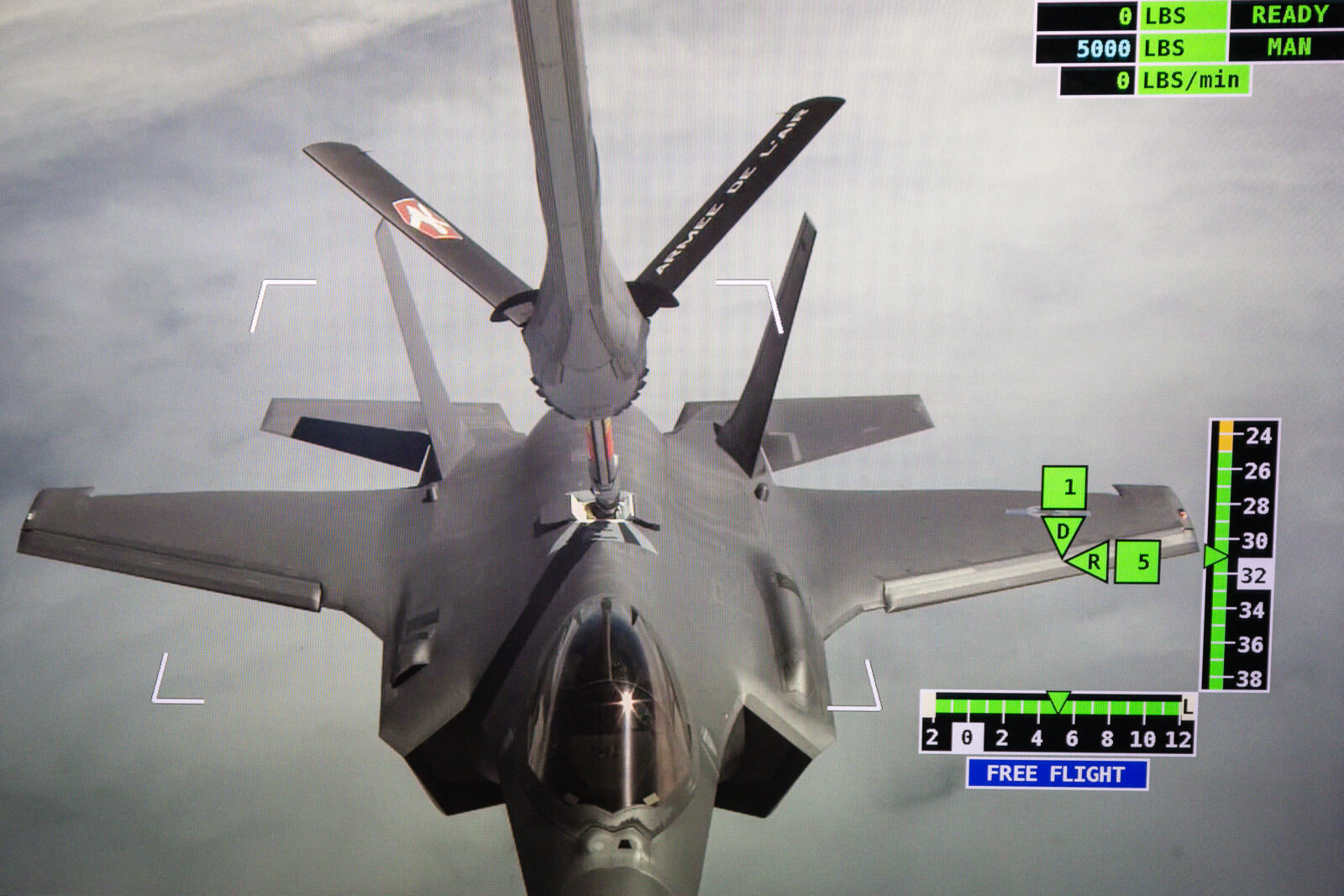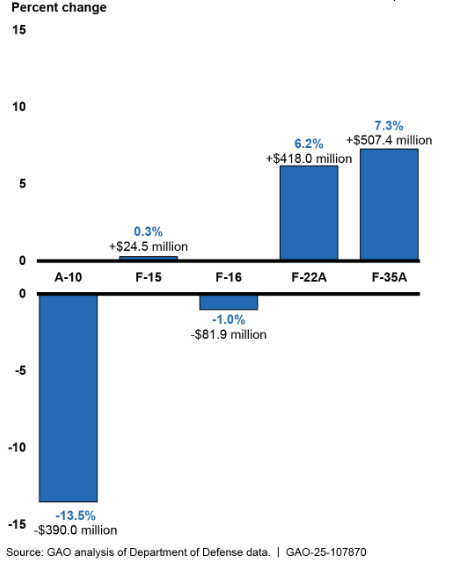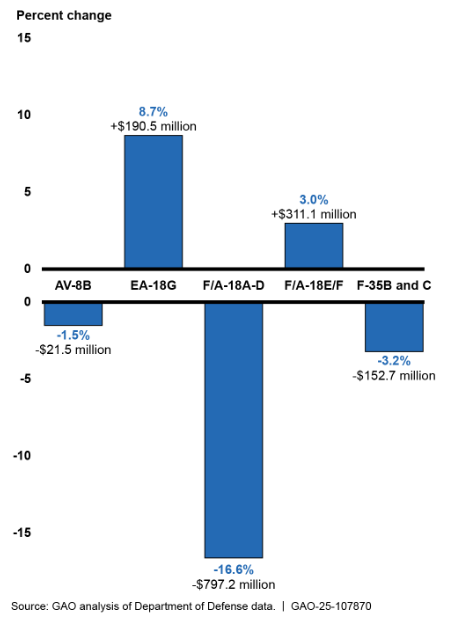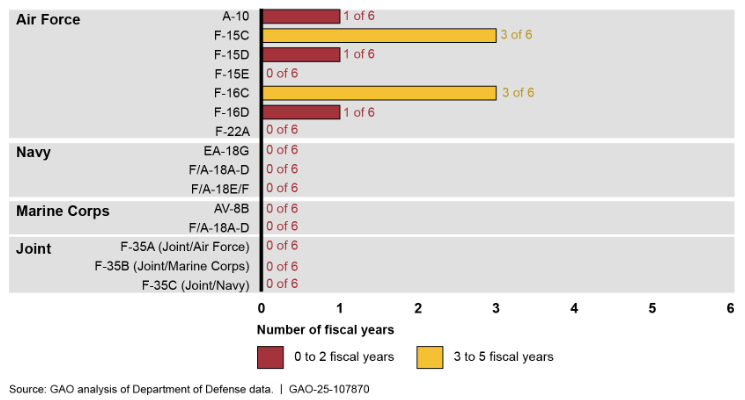F-35 fails to meet combat readiness marks despite $12B spent
 This photograph shows an US stealth multirole combat aircraft Lockheed Martin F-35 waiting for an aerial refueling, while he participates in the "Ramstein Flag 2024" exercice. (AFP Photo)
This photograph shows an US stealth multirole combat aircraft Lockheed Martin F-35 waiting for an aerial refueling, while he participates in the "Ramstein Flag 2024" exercice. (AFP Photo)
A new U.S. Government Accountability Office (GAO) report reveals that all versions of the F-35, the most expensive weapons program in the world, have failed to meet combat readiness targets for six consecutive years.
Despite the U.S. military services – the Army, Navy, and Marine Corps – spending $12 billion on aircraft operations and maintenance from 2017 to 2023, the fleet did not achieve minimum “mission capable” rates during this period.

Billions spent, readiness still lags for F-35’s
The GAO reviewed the $57.2 billion allocated by Congress for F-35 maintenance and operations over six years. Around 21% of this amount was dedicated to efforts to improve the readiness of more than 1,000 F-35 aircraft delivered to the U.S. military and international partners.
However, the jets did not meet their readiness objectives for any year from 2017 to 2023.

What GAO found about F-35
The U.S. Department of Defense (DOD) spends billions of operation and maintenance (O&M) funds annually to operate and maintain its tactical aircraft, such as the F-35, F-16, and F/A-18.
The O&M funds are used to buy spare parts for and conduct maintenance on the tactical aircraft so that these aircraft are able to achieve readiness goals, such as mission capable rate goals for aircraft.
Mission capable rates – the percentage of total time when the aircraft can fly and perform at least one mission – are used to assess the health and readiness of an aircraft fleet. GAO found that:
- The departments of the U.S. Navy and U.S. Air Force have detailed processes for developing their tactical aircraft requests for their O&M funding that involve various organizations and levels of review over multiple months.
- Though variations exist on an annual basis, service execution of O&M funding for tactical aircraft was generally consistent with the military services’ requested funding for fiscal years 2018 through 2023. From fiscal years 2018 through 2023, the Air Force and Navy executed slightly more O&M funding than requested for tactical aircraft sustainment, while the Marine Corps executed less.
- During the same period, the mission capable rates for all U.S. Navy and U.S. Marine Corps tactical aircraft (AV-8B, EA-18G, F/A-18/A-D, F/A-18E/F, F-35B, and F-35C) in our review increased, while rates for all Air Force tactical aircraft (A-10, F-15/C-E, F-16C/D, F-22, and F-35A) decreased.
- Tactical aircraft mission-capable rates have generally not met DOD goals for several years. GAO’s prior work and agency officials attribute this shortage to numerous interrelated, complex factors, such as aging aircraft, maintenance challenges, and supply support issues.


Mission capable rate for F-35 is far below target
The mission capable rate, which measures the percentage of time an aircraft can perform at least one assigned mission, was a significant factor in failing to meet goals.
For example, the U.S. Air Force’s F-35A had an objective rate of 90%, while the Marines’ F-35B and Navy’s F-35C targeted 85%. By March 2023, the overall fleet’s mission capable rate was around 55%, far below the required levels.
The F-35s’ poor mission capable rates were due partly to challenges with depot and organizational maintenance. We also reported that, by design, DOD relies heavily on its contractor to lead and manage F-35 sustainment. In April 2024, we reported that DOD’s projected costs to sustain the F-35 grew from an estimated $1.1 trillion in fiscal year 2018 to $1.58 trillion in fiscal year 2023
U.S. Government Accountability Office

Lockheed Martin defends performance
Lockheed Martin, the manufacturer of the F-35, responded to the report, stating that nearly 90% of the aircraft’s components are performing better than required under the terms of the contract.
However, GAO cited maintenance and supply chain challenges as ongoing issues affecting the program’s overall readiness.



